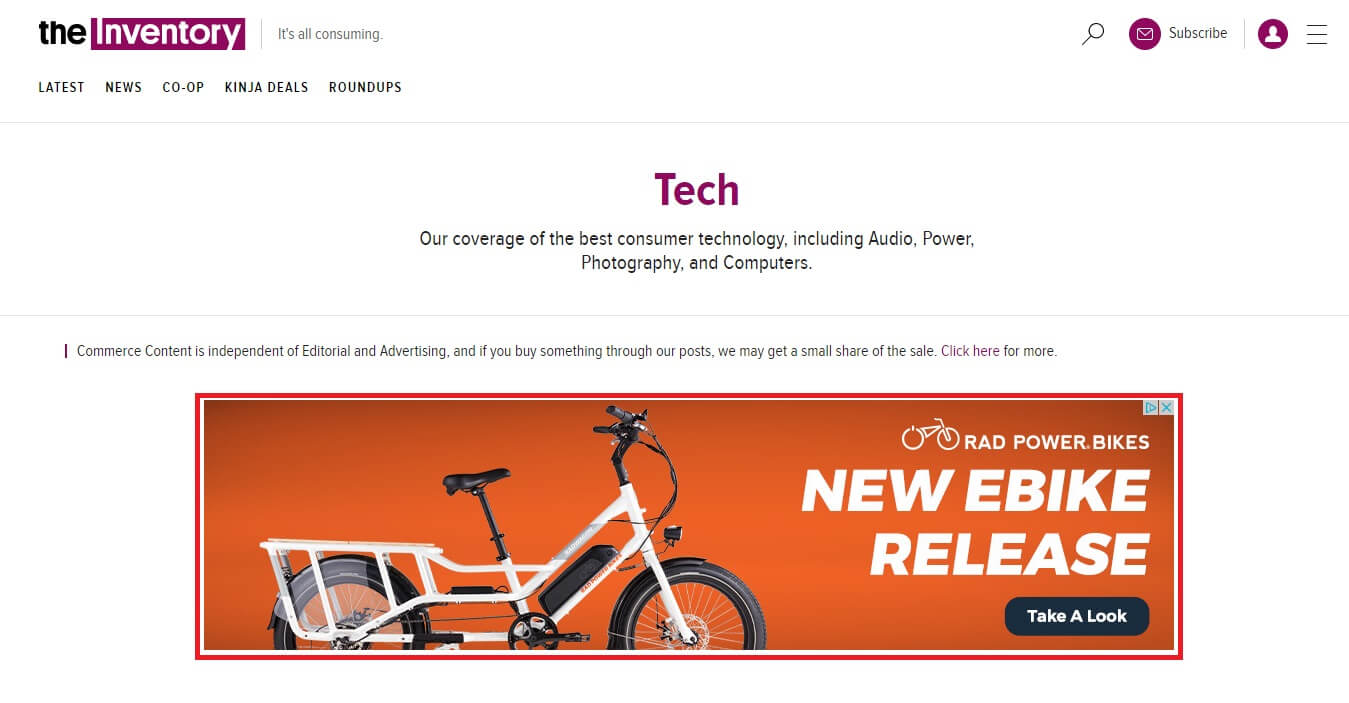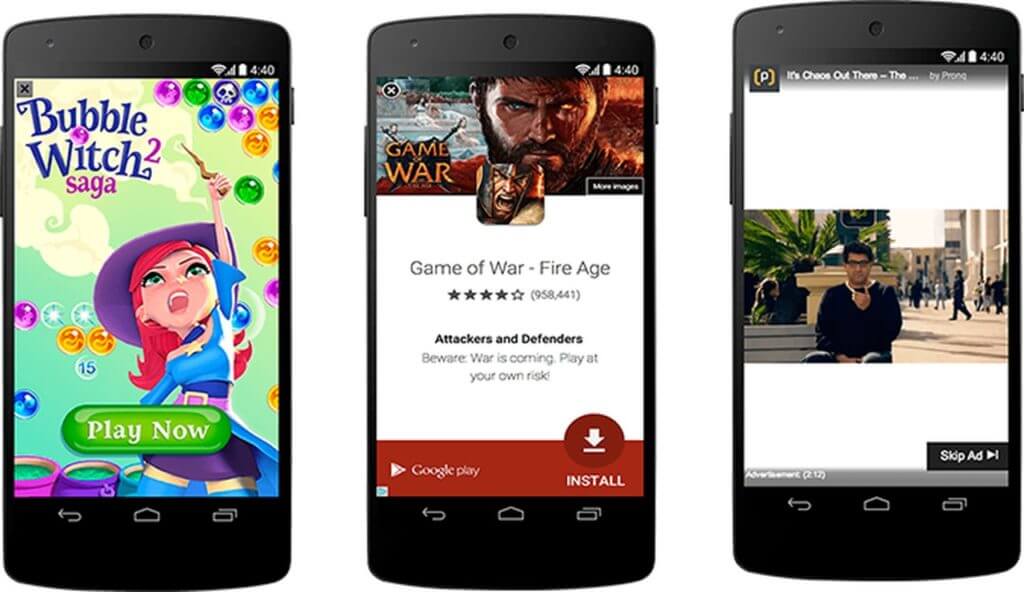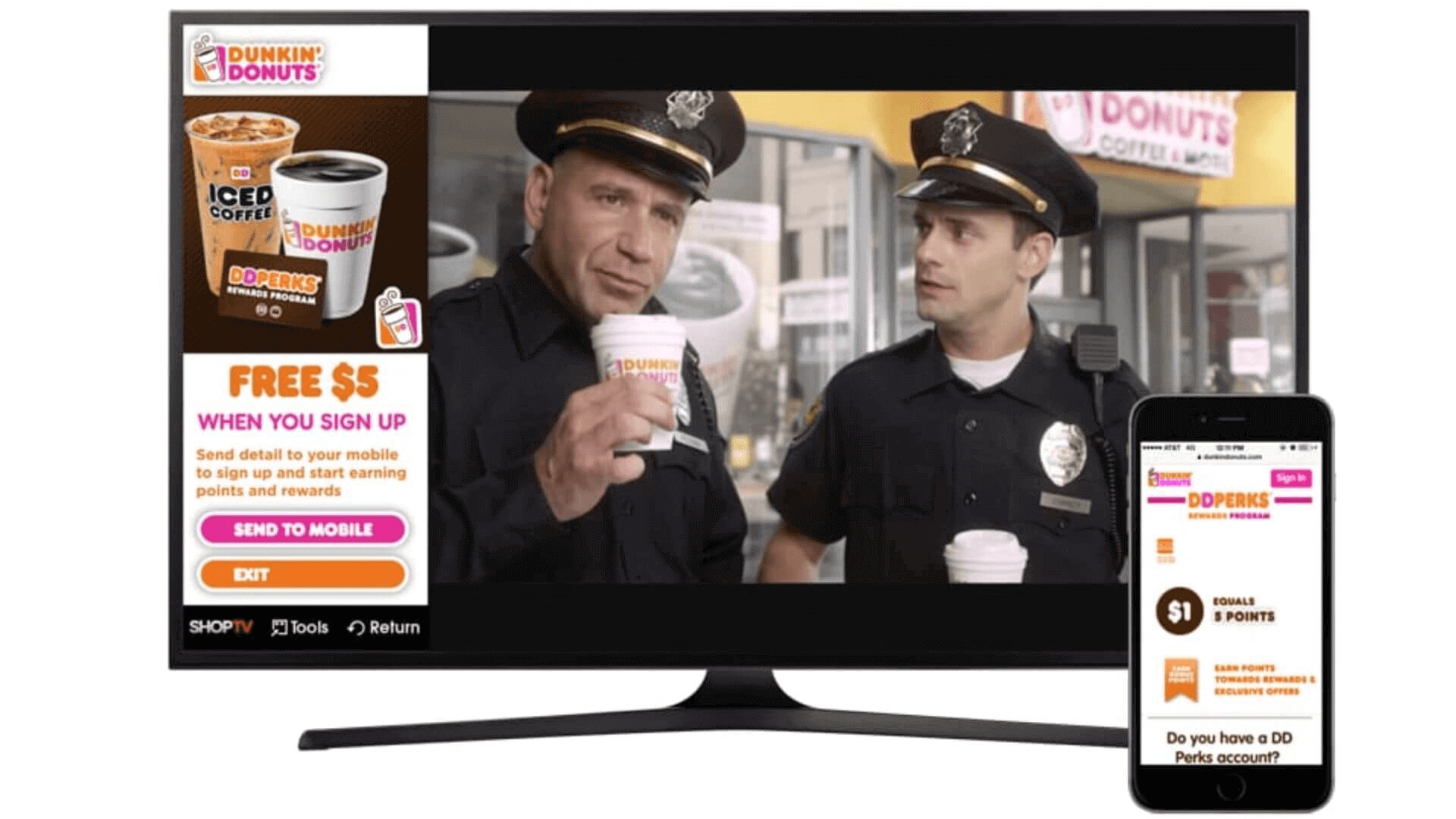9 Most Effective Mobile Ad Formats for Your Advertising Campaign
 by Roman Vrublivskyi
by Roman Vrublivskyi
 by Roman Vrublivskyi
by Roman Vrublivskyi
Have you noticed how many times a day you usually go online? It’s unlikely that you can count this simple – today, people spend more than 4 hours on the Internet: scrolling through social networks, reading articles on various sites, and watching videos on YouTube. And each of these media actually has ads built into them.
Since all of those media channels are different, a huge number of ad formats are designed specifically for these media – mobile video ad formats, desktop ones, and even ones for Smart TVs and digital out-of-home billboards. With all this plethora, media buyers can effectively increase their potential reach.
Nowadays, online advertising sells better than any billboard. But this does not mean that it is enough to depend only on a single type of traffic. The more opportunities you have in your ad environment, the more deals can happen in your ad exchange. For this, you should integrate matching demand and supply partners, adjust settings correctly, and let the media trading forge. Let’s discover what are those formats you can capitalize on and how to leverage them in your SmartHub.
Banner ads are rectangular display ads that occupy a prominent position at the top, or bottom, or sides of a mobile app or website. They serve as an unobtrusive yet effective way to fight for attention of users.
By the way, did you know that with the app-ads.txt, developers can openly state which ad tech brands are allowed to sell their mobile inventory? Explore more what is ads.txt.
Banner ads come in diverse sizes, from the traditional 320*50 pixels to larger formats like 300*250 pixels. Those are versatile and can be static or animated, providing ample room for creativity.

Interstitial ads, often referred to as splash pages, are full-screen advertisements popping up during breaks in a user’s interaction with an app or website. They offer a visually immersive experience, making them ideal for capturing undivided attention.
These ads are commonly used in gaming apps, news apps, and content-rich websites. The key is to achieve harmony between user experience and ad frequency to guarantee maximum impact.

Videos aren’t new mobile advertising formats but they are vibrant and engaging form of advertising that delivers content in a visual and auditory format. They can be further categorized into in-stream and out-stream videos.
In-stream videos play before, during, or after the content a user is viewing. Out-stream videos, on the other hand, are standalone ads that appear within the content flow, providing a seamless viewing experience. Video ads should be concise, typically ranging from 15 to 30 seconds, to maintain viewer engagement.
It will be also useful for you to explore these 8 programmatic video advertising trends.
CTV ads are tailored for smart TVs and other internet-connected devices, tapping into the expanding realm of streaming services. With the rise of platforms like Netflix, Hulu, and Amazon Prime Video, CTV ads offer a powerful way to reach a diverse audience.
Here we explained how to unlock the targeted reach and engagement with the power of CTV advertising.
CTV ads can be displayed on different gadgets, including mobile, in formats that enlist pre-roll, mid-roll, and post-roll, providing ample opportunities to engage viewers.
By the way, do you know what is a Free Ad-Supported TV (FAST), and why it`s one of the ad tech trends?

This category includes both banner in-app ads such as banners and in-app video ads, which, by the way, appear to be the greatest profit drivers on your SmartHub ad exchange for most clients.
In the U.S, around 88% of mobile time is spent in-app. Thus, it helps publishers to maximize their gains and advertisers to reach more customers.
Banner in-app ads maintain a non-intrusive presence, appearing at strategic points within the app. In-app video ads, on the other hand, offer a captivating and dynamic way to convey your message. They can be skippable or non-skippable, allowing for flexibility in content delivery.
Additional effective in-app advertising formats include: rewarded video ads, ricj-media ads, playable ads, offerwall ads, splash ads, etc.
Uncover how to boost your app’s revenue with in-app video ads.
Native vs display ads? It’s a popular question. Let’s explore it further.
Native ads ensure a non-disruptive advertising experience since they mimic the surroundings of the app or the social feel where they are typically set.
Native mobile ads consist of tailored elements that are presented to users through user interface components inherent to the platform. Native mobile advertising is customized to mobile applications or mobile games to perfectly harmonize with the apps` visual aesthetics so they are often perceived more positively by the apps` users.
In essence, effectively implementing native ads involves two key components: loading an ad via the SDK and then integrating the ad content seamlessly within an app for a highly effective ad interaction with an app users, aligning more closely to the consumer`s mindset.
Native ads are particularly effective in social media feeds, news articles, and content discovery platforms. They resonate with users by providing relevant, contextually-driven messaging.
Mobile native ad formats support huge variations of advertising units.
For example, mobile native advertising formats can come in the form of push notifications (immediate system notifications) or recommendation widgets on the website (normally mobile web ads).
Push notifications are short, impactful messages that are delivered directly to a user’s device. They demand immediate attention and can be highly effective for promotional ads like hot offers with limited-time announcements. Pushes normally work just well when personalized for every user while taking into account their location, interests, and behavioral data (if applicable).
Pop-up ads are attention-grabbing visuals that appear abruptly on top of a mobile screen. While they can be invasive, when used judiciously, natives work effectively in seizing user attention in a landslide.
Pop ads are commonly used for special promotions, limited-time offers, or calls to action that require immediate action.
Audio ads leverage sound to convey marketing messages. They provide an auditory experience to users, making them an effective choice for media like music streaming services and podcast applications.
Audio ads should be carefully crafted to deliver a compelling message within the short duration of the ad slot.
It`s also exciting to explore these 7 advantages of programmatic audio advertising.
Mobile programmatic buying encompasses mixed formats along with strategies to engage audiences effectively. These include mobile banner ads, video ads, interstitials, native ads, and more.
Understanding the nuances of each type empowers media buyers to make informed decisions about their campaigns. When we talk about ad types, it is worth mentioning that those are not only static pictures and videos – new mobile ad formats incorporate such innovative and dynamic units as playable ads or playable ones.
Types also depend on the environment; for instance, while the mobile web is practically the same as the desktop, the in-app environment is built based on the applications, so the apps may appear only within apps.
At the same time, the in-app ad environment is the most lucrative; unlike mobile web (based on browser ads), in-app ads can be effectively placed within gameplay; they can feature additional bonuses and involve much better interaction and, thus, memorability.
If you are interested to get more inspiration for your next campaign- these 7 programmatic advertising examples will be helpful.
Mobile banner ads are a cornerstone of digital advertising. The key here is to remember that mobile ad banner sizes are pretty universal because they can occupy either the entire gadget’s screen or be as small as the quester of the screen. Those ads are delivered in different sizes, including average dimensions like 320×50 pixels and larger formats like 300×250 pixels. These versatile ads provide a canvas for creativity while maintaining a non-intrusive presence on mobile screens.
Optimizing mobile ad sizes is crucial for a seamless user experience. Customary mobile ad sizes, including 320*50 pixels and 300*250 pixels, ensure that ads fit greatly within app interfaces. Mobile display ad sizes that appeared to be most efficient for web environments are 320*480, as well as 300*250. Such sizes as 728*90, and 768*1024 are the most popular on tablets.
Earlier we have also described the most popular ad formats and sizes.
Your demand partners may run different types of ad campaigns and different mobile ad types they normally take into account the following factors while determining which kind of traffic to choose:
Understanding audience’s preferences, behaviors, and demographics is paramount in choosing a format that resonates with them.
Different ad formats serve different purposes. Demand partners usually choose ads that raise brand awareness, drive conversions, or encourage user engagement.
Industry
Each industry has unique dynamics and consumer behaviors. Demand partners usually identify the most effective approach for their particular sector. For instance, e-commerce campaigns may benefit from dynamic product-focused ads, while content-driven platforms may find success with native advertising.
For you as an ad exchange owner
For you as an ad exchange owner, the main goal is to determine what kinds of ad formats are the most popular among your demand partners. This way you will be able to take necessary actions (for instance, connect more supply partners with such kinds of traffic).
Remember that on SmartHub, you also have an amazing tool for the correct traffic distribution that channels the right type of traffic toward DSPs that need such traffic most. This feature is enabled by artificial intelligence and is called RCPM Adapter or QPS Adapter.
Implementing mobile ad formats requires a strategic approach to ensure maximum impact. Here are some actionable tips that your demand partners can implement to achieve greater campaigns success on their part.
Regularly test different ad variations to identify what resonates best with your audience. Analyze metrics such as click-through rates, conversion rates, and engagement levels. Optimize based on these insights to continually improve performance.
Ensure that the chosen format directly supports the goals of your campaign. For example, if your objective is to drive app installs, consider utilizing in-app ads with clear call-to-action buttons.
With the majority of internet traffic coming from mobile devices, it’s crucial to prioritize mobile-friendly designs and content. Ensure that landing pages are responsive, load quickly, and offer a seamless experience. This not only improves user satisfaction but also positively impacts ad performance.
Many ad solutions feature sophisticated targeting capabilities, letting media buyers reach specific demographics, behaviors, and interests while applying different types of mobile ads. Utilize these features to refine your audience and increase the relevance of your ad content.
Keep a close eye on the performance of your ad campaigns in real time. Identify any trends or anomalies and be prepared to make adjustments as needed. This agility is essential in maximizing the impact of your advertising efforts.
As you know for sure which formats are the most popular in your ad exchange, you have an amazing chance to seamlessly enable them for your demand partners.
For this, while configuring endpoints, tick the formats that you want to enable for these partners and choose the needed traffic type. For instance, read how you can do it for audio advertising, for the reast of the formats, the process is just as seamless and straightforward.
In one of our previous articles we described how to create a strong programmatic ads strategy.
SmartHub white label ad exchange provides companies of different sizes and budgets to launch and efficiently run their own white-label ad exchange. To enter the programmatic market will take only up to one week. Thanks to such a quick professional launch, companies have a big perspective to achieve payback and revenue growth much faster than it usually goes with platforms built from scratch.
Explore our guide about how to get started with programmatic advertising.
SmartHub`s exclusive approach includes all-encompassing customer support from, expert guidance, and cost-cutting innovative technology. This powerful combination propels our clients` businesses towards awesome results, often much better than was expected.
Take a look at the case studies of SmartHub, and explore the detailed description of our partners` programmatic business journey and their impressive results.
Incorporating the right mobile ad formats into an advertising campaign is a strategic imperative in today’s competitive digital landscape. By understanding the nuances of each format and implementing them effectively, one can unlock the full potential of their marketing efforts.
While your demand partners optimize and choose the most suitable formats, you can enable them myriads of format options for the best possible results. Remember, the success and profitability of your ad exchange lies in the thoughtful matching of the right traffic to the right demand.
Want to Learn More?
Want to Learn More?
We'll get back to you very soon.